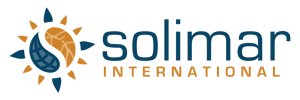Working in the tourism industry has opened our eyes to the overall diversity of times, customs, and traditions that are associated with welcoming the New Year around the world. For many in the United States, New Year’s Eve will be celebrated with friends and family over a bottle or two of bubbly, Chinese food, and some fireworks. In Greece, people will get ready for the New Year by hanging an onion on their doors (as a symbol of rebirth). To the Western Hemisphere and those who follow the Gregorian calendar this day of celebration and reflection is on January 1st. Many Eastern cultures however, typically celebrate the New Year in late January or early February (because they follow a lunisolar calendar). New Year’s is a unique holiday because it presents a dichotomy of emotion- a sober reflection of the year past alongside an optimistic celebration and hope for the year ahead.
Let us share with you some of the traditions from the places Solimar will be working in the New Year:
Ethiopia
In October of this year Solimar started preparation to run a series of trainings for the Ministry of Culture and Tourism and five regional tourism bureaus in Ethiopia. The trainings are focused on building public sector capacity to leverage sustainable tourism potential in the country.
Ethiopians follow a variation of the Alexandrian calendar and celebrate New Year’s, which they call Enkutatash, in mid-September. New Year’s Eve celebrations in Ethiopia include live music, cultural events, religious gatherings, parties and beer drinking. New Year’s Day begins with church services followed by a family meal where small gifts are given to the children.
Nepal
Solimar began working in Nepal earlier this year developing and renovating an online platform that promotes trade and trekking along the Great Himalayan Trail. Through identifying and supporting a new legal entity to take over development, expansion, and maintenance of the website Solimar hopes to spur international visitors to trek in Nepal.
Nepal follows a lunar calendar and therefore celebrates New Year’s Day on the first day of the waxing moon. New Year’s EveDay fall during the Swanti Festival—a five-day festival celebrating the central role of women in the household and wishing family members good fortune. Newars observe New Year’s Day by performing Mha Puja, a ritual to purify and empower the soul. Outdoor celebrations, such as pageants, rallies, and cultural processions, take place throughout the day.
Sri Lanka
Beginning in February and extending into the New Year, Solimar will be working with USAID’s Biz+ program aiming to improve the economic climate, increase employment, and generate higher household incomes in Sri Lanka. Solimar is working with small tourism enterprises in Sri Lanka helping them develop business plans and strategies as well as improving their business capacity through a number of services.
The Sinhalese people of Sri Lanka celebrate New Year, or Aluth Avurudda, on the 13th of April, which marks the end of the harvest season. Interestingly, the Sinhalese New Year does not begin at midnight the day before, but is determined by astrological calculations. The time between the old year and the new is usually 12 hours and 48 minutes and is referred to as the Nonagathe (auspicious time). Cultural rituals including cleaning the house and lighting an oil lamp, begin once the New Year arrives and are followed by a celebration of fireworks and street parties.
From everyone at Solimar International, Happy New Year!
 .
. 

